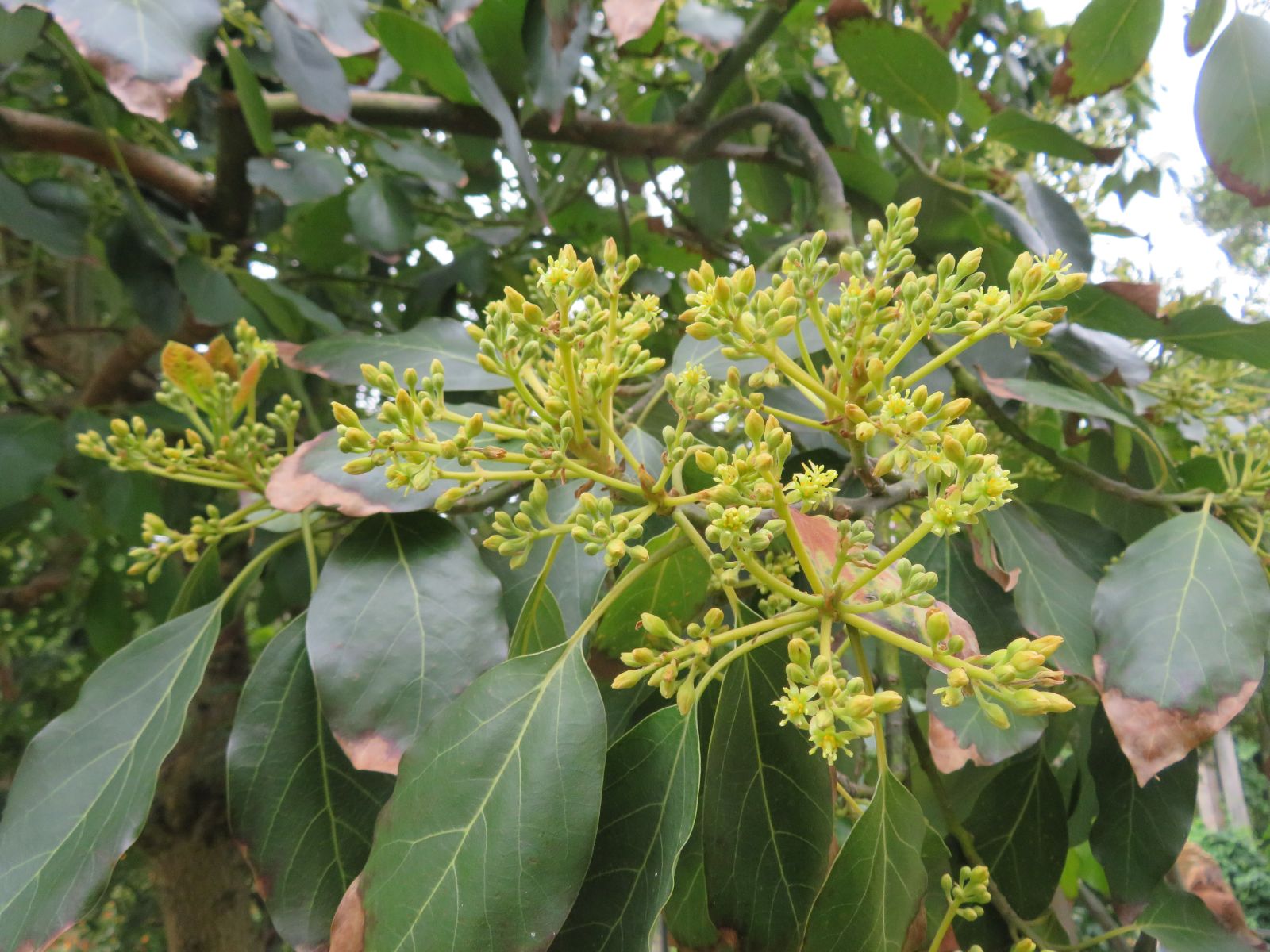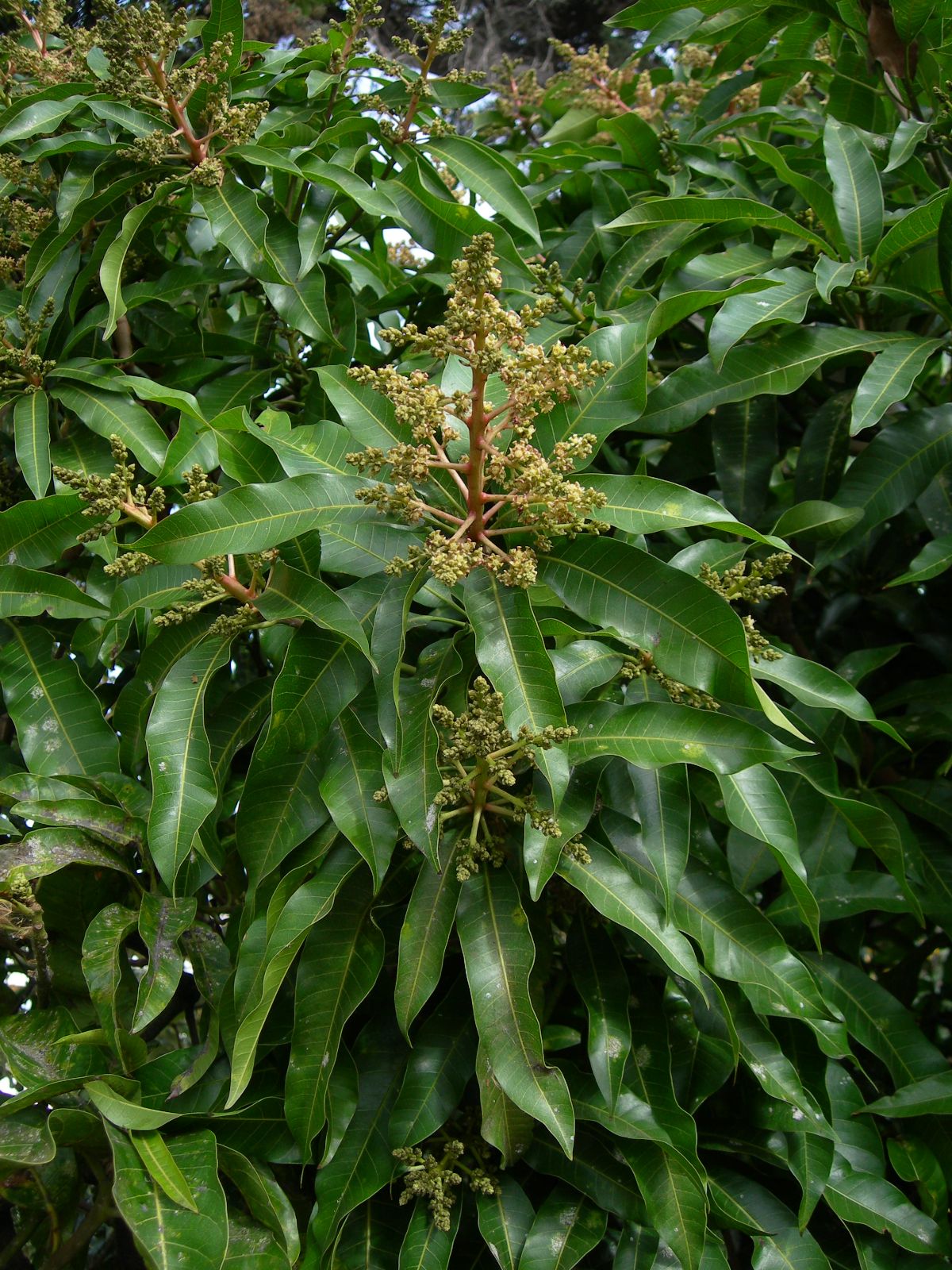Persea americana
Credits
Article from New Trees by John Grimshaw & Ross Bayton
Recommended citation
'Persea americana' from the website Trees and Shrubs Online (treesandshrubsonline.
Genus
Common Names
- Avocado
Tree to 40 m. Branchlets thick, pubescent or glabrous, frequently with groups of bract scars at the base of each season’s growth; terminal buds pubescent. Leaves evergreen to semi-deciduous, spaced along the branches or gathered towards the apex, papery, sometimes aniseed-scented, (6–)10–18(–30) × (2.5–)5–12 cm, extremely variable in shape, though usually elliptic, upper surface glabrous, lower surface green to glaucous, glabrous or variously pubescent, 6–8(–10) secondary veins on each side of the midrib, margins entire, apex rounded, obtuse or acute, rarely acuminate; petiole 1–5 cm long, pubescent or glabrous. Inflorescences axillary, or at the base of new branches, (3.5–)5–11 cm long, glabrous or pubescent, pedicels 0.4–0.8 cm long. Flowers ~0.5 cm long, yellowish, inconspicuous; tepals six, elliptic, 0.3–0.6 cm long, densely pubescent; fertile stamens six, filaments pubescent, staminodes three or more, glandular. Fruit a pyriform or globose berry with rough green or purple skin and oily flesh, 5–15 cm long, depending on the cultivar. Flowering January to March, fruiting April to June (Mexico). Van der Werff & Lorea 1997. Distribution The Avocado originates in Mexico or Central America, but is now grown in tropical climates around the world. Habitat Extremely variable. In Querétaro, Mexico it grows primarily in montane, mesophytic forest between 850 and 1700 m asl. However, the seed germinates easily; consequently, it is common in disturbed habitats. USDA Hardiness Zone 9–10. Conservation status Not evaluated. Illustration Van der Werff & Lorea 1997; NT551. Cross-reference K370.
Persea americana, the Avocado, is the best-known species in the genus, cultivated throughout warm temperate and tropical areas for its large, nutritious fruit, consumed by itself or as a component in salads. The ease with which its seeds germinate (whether or not supported by crossed toothpicks over a glass of water) makes it a popular novelty subject, and the resultant seedlings are sometimes planted in temperate gardens – usually to be killed promptly by frost. Indeed, its inclusion in this book might seem dubious, but for the fact that there are several trees growing and fruiting happily in central London. A more striking example of the effects of microclimate could hardly be sought: Johnson (2007) mentions trees in Chelsea (6 m) and Stepney (4.5 m), while Martin Gibbons of the Palm Centre, Richmond (pers. comm. 2006) has drawn our attention to another in Ladbroke Grove. This one was about 5 m tall and rather broad at the base, fully clad in healthy dark green foliage and bearing many unripe fruits when observed by Martin Gibbons in July 2006. These specimens are, of course, exceptions, but they demonstrate the point that plants may well be ‘worth a try’ and that with care, and/or luck, boundaries may successfully be pushed when planting marginal species. Hogan (2008) comments that similar individuals can be found in western American cities ‘between freezes’, but that the species is more generally successful on the southern Oregon coast, specially around the mild enclave of Brookings. Similarly, there are substantial trees in Cornwall and on the Scilly Isles. For those of us who do not garden in such benevolent areas, however, the climate will have to change dramatically before we can safely plant P. americana (for which any persistent frost is a danger). A useful summary of Avocado culture under commercial conditions is given by Huxley et al. (1992).



